Let Them Eat Cake
Let Them Eat Cake
You have embarked on a new, lifelong journey; one that promises better health, less pain, and more energy. You are eating foods you know your body responds well to and have eliminated those that may be contributing to the physical and emotional health issues that brought you to this journey. Undoubtedly, one of those foods you had to say goodbye to is sugar. Research has proven what health professionals have admitted to be truth – sugar is poison to our bodies. Your symptoms may vary, but the cause is the same. Eating sugar can cause inflammation, and inflammation damages our bodies, often causing pain and chronic disease.
Sugar has, overtime, become our most frequently used food ingredient, even when eating food items that seem the least likely to need a sweetener. Read those labels and you will see sugar everywhere. There are over 50 names for sugar, many of which are hard to recognize. You have to become a sleuth at times to really know what you are putting into your body. But it is worth the effort, when you are committed to living your best, healthiest life.
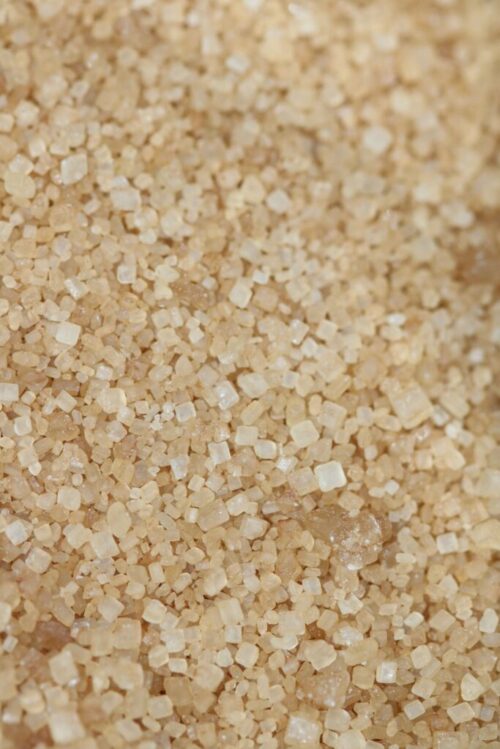
Unfortunately, finding and eliminating sugar from our diet isn’t even the most difficult part – it’s the emotional attachment we have to sweet foods. Our happiest memories are often accompanied by treasured smells and flavors of delicious treats enjoyed during those fun times. Our favorite comfort foods may be those treats that give a lift to our tastebuds, and our frame of mind. Our oldest childhood experiences may reinforce the belief that no meal is complete without a little sweetness on our tongues. Convincing our bodies, and our minds, that this sweetness is not only unnecessary, but also damaging, can wreak havoc on an emotional system already under assault due to the chronic symptoms we are experiencing.
The good news is that there are a wide variety of natural, safe sweeteners that can be used, in moderation, to satisfy our sweet tooth and our emotional tie to desserts. It’s important to note, however, that “a sweetener by any other name doesn’t always taste as sweet”. Following you will find a brief comparison of several natural sweeteners (artificial sweeteners will not be discussed as they are often more damaging than refined sugar) to help you choose which ones will be of the most use to you and your needs.
This is not a comprehensive list, as there are many other natural sweeteners available. This list is based mainly on the author’s experience. Prices are from Amazon, are approximate, and do not include shipping charges. Prices are compared to Domino Cane Sugar, at $.20 per ounce . For further reference, the glycemic index of refined sugar is 65. It is also important to note that refined sugar has no nutritive value.
Raw Honey
Cost: $.40/oz
Glycemic Index: 58
Pros: Raw honey is loaded with nutrients. Vitamins include A, and several B vitamins. Minerals include calcium, magnesium, phosphorous, potassium, iron and zinc, as well as several others. If you get locally sourced honey, it may help with allergies to local pollen, although try this out with caution. Raw honey also contains digestive enzymes and prebiotics, both of which improve gut health. Other benefits include antibiotic properties and wound healing ability, as well as being anti-inflammatory. Finally, honey has a mild flavor profile that should not be noticeable in most recipes.
Cons:
• Do not give raw honey to babies under 1 year old.
• Honey is not a low calorie sweetener and it can increase blood sugar levels.
• Those sensitive to fructose may experience digestive upset.
• There are some groups that advise against cooking with honey as heating it removes many of the health benefits, and can even cause adverse effects.
Sweetness compared to sugar: 1:1, although baking requires some modifications
Cooking and baking methods and tips:
• Honey can be used 1:1 in general cooking
• When baking with honey, you will need to reduce other liquids in your recipes by 1/4 cup for every cup of honey added.
• If there are no other liquids in the recipe, add 2 tablespoons flour for every cup of honey.
• Increase baking soda by 1/2 tsp to neutralize acidity.
• Decrease baking temperature by 25 degrees to prevent over-browning
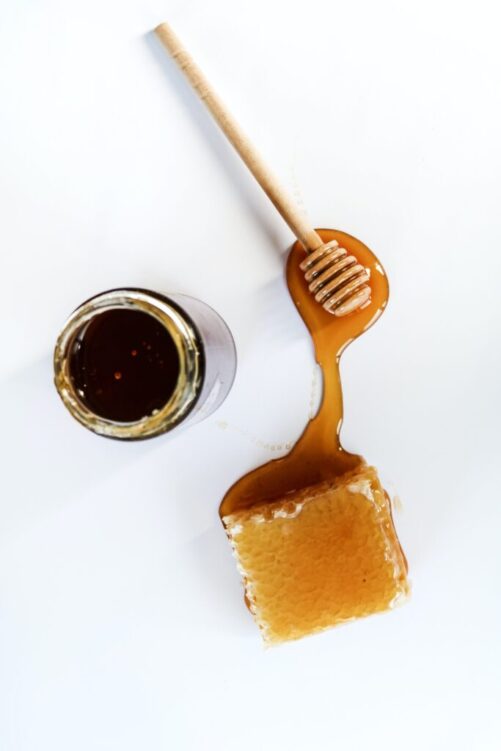
Molasses
Cost: $.70/oz
Glycemic Index: 55
Pros: Molasses has many of the same minerals as honey and maple syrup, in addition to Vitamin B6 and selenium, an essential trace mineral. It is also a good source of antioxidants.
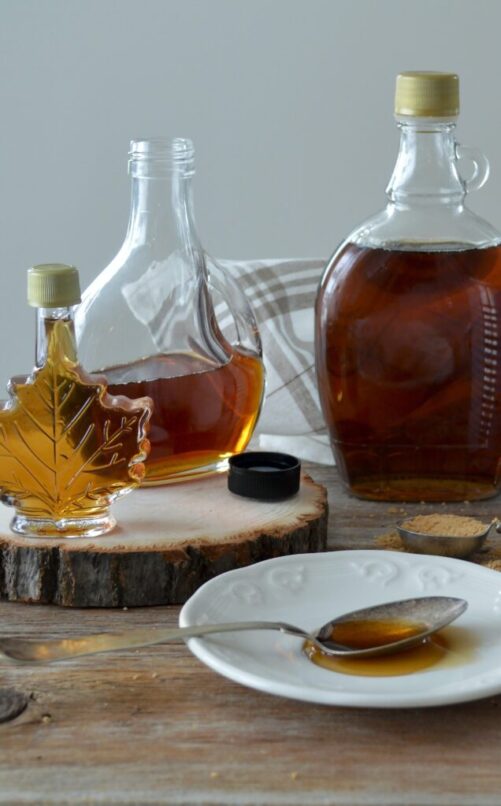
Cons:
• Molasses is not a low calorie sweetener and can contribute to increased blood sugar.
• The fermentation process involved in making molasses can contribute to digestive problems, especially in those with IBS or other digestive issues.
• Because molasses is made from sugar cane, those with sensitivities to sugar cane may want to avoid molasses.
• Molasses has a very strong flavor profile, which may overwhelm some recipes.
• Molasses is one of more expensive sugar alternatives.
Sweetness compared to sugar: Molasses isn’t as sweet as sugar, so you will need to use 1 1/3 cups of molasses to equal the sweetness of 1 cup of sugar
Cooking and baking methods and tips:
• In baking, reduce the amount of other liquids by 5 Tbsp ( or 1/3 cup) for 1 1/3 cup molasses
• If there are no other liquids in the recipe, add 2 tablespoons flour for every cup of maple syrup
• Add 1/2 tsp baking soda to recipe for every cup of molasses to reduce acidity
Pure Maple Syrup
Cost: $.60/oz
Glycemic Index: 54
Pros: The vitamin and mineral profile of maple syrups very similar to that of honey. Maple syrup has a slightly lower glycemic index as sugar, and recipes require a smaller amount, making that an advantage for those watching blood sugar. Pure maple syrup supports the immune system and is recognized as being a good choice for those on an AIP diet.
Cons:
• Do not give raw honey to babies under 1 year old.
• Honey is not a low calorie sweetener and it can increase blood sugar levels.
• Those sensitive to fructose may experience digestive upset.
• There are some groups that advise against cooking with honey as heating it removes many of the health benefits, and can even cause adverse effects.
Sweetness compared to sugar: 1:1, although baking requires some modifications
Cooking and baking methods and tips:
• Honey can be used 1:1 in general cooking
• When baking with honey, you will need to reduce other liquids in your recipes by 1/4 cup for every cup of honey added.
• If there are no other liquids in the recipe, add 2 tablespoons flour for every cup of honey.
• Increase baking soda by 1/2 tsp to neutralize acidity.
• Decrease baking temperature by 25 degrees to prevent over-browning

Erythritol
Cost: $.40/oz
Glycemic Index: 0
Pros: Erythritol has 0 calories and does not raise blood sugar levels. It comes in a granulated form, making it easy to use in general cooking and baking. Other zero calorie sweeteners, like stevia and monk fruit, are often blended with erythritol, giving these sweeteners a 1:1 measure ratio. Since the bacteria in mouths does not metabolize erythritol, it does not cause tooth decay. Also, erythritol is not overly expensive, although having to use more for the same sweetness may offset the cost advantage.

Cons:
• Erythritol is a sugar alcohol, so those with digestive systems sensitive to sugar alcohols should avoid it.
• While erythritol is naturally found in foods like pears, wine, and cheese, the product that is sold in grocery stores is manmade, usually from genetically modified corn or wheat starch.
• Some manufacturers add aspartame, an artificial sweetener linked to many health issues, with erythritol to increase the sweet taste.
• Erythritol can cause some allergy symptoms, especially in those sensitive to corn and wheat products
• While erythritol does not have a strong flavor profile, there is a cooling sensation that some may find off-putting.
Sweetness compared to sugar: Plain erythritol (not blended with monk fruit or stevia) is slightly less sweet than sugar, so plan to use 1 to 1 1/3 cup per cup of sugar.
Cooking and baking methods and tips:
• Granulated erythritol can be used the same way regular sugar is used. You may just want to add a bit more to your coffee or recipe if using plain erythritol.
• Some have reported that foods baked with erythritol do not stay moist as long as those made with sugar, so it is best to use baked goods within the first day or so of baking.
Stevia
Cost: $.50/oz
Glycemic Index: 0
Pros: Stevia is a plant-based sweetener with zero calories. Dried stevia leaves can be purchased (or you can grow and dry the plant yourself) and used as is ( I steep mine in a tea infuser to sweeten my tea) or even ground up in a food processor to use as powdered stevia (2 tbsp per 1 cup sugar). Stevia has been found to reduce blood glucose and blood pressure levels. It is considered a safe ingredient to aid with weight loss It also has antioxidant properties and may be anti-inflammatory. The cost of stevia is high as compared to sugar, but
since you use so little, it is actually inexpensive to use. (This may not be true when stevia is blended with other ingredients.)
Cons:
• One of most obvious downsides to stevia is the taste. While it is considerably sweeter than sugar, it has a bitter aftertaste that some find unpleasant. This may lessen over time as you become used to the taste, but it is a consideration for many.
• Stevia is often blended with erythritol or other products. This makes it easier to measure and bake with, but may add unwelcome responses.
• Stevia is considered safe for the majority of the population, including pregnant women and children, but may cause some slight stomach upsets. (Most of the time, this is from additional ingredients added to stevia)
• Because the amount of stevia needed for recipes is so small, it can upset the moisture balance in a recipe, making it necessary to add additional liquid.
Sweetness compared to sugar: Stevia is considered to be 300 times sweeter than sugar.
Cooking and baking methods and tips:
• Be sure you know which type of stevia you are using. Stevia blends, stevia powders, and stevia extracts will all have different concentrations and will require different amounts. The best rule of thumb is to go by the directions on the package, as there can be a degree of variation even between manufacturers of the same product.
• For results closest to regular sugar, a 1:1 stevia/erythritol blend will be the easiest to use and will produce the best texture.
• Some recipes suggest to only replace 1/2 of the sugar with stevia products to maintain moisture, browning, and texture.
• Add 1/3 cup liquid per one cup of sugar being replaced by stevia extracts or powders. Liquid choices can include applesauce, yogurt, pumpkin, juice, etc., depending on the recipe

Monk Fruit
Cost: $.46/oz
Glycemic Index: 0
Pros: Like Stevia, Monk fruit is considerably sweeter than sugar, so a very small amount is all that is needed, meaning it may help with weight loss. Unlike stevia, there is no bitter aftertaste with monk fruit. It helps to reduce blood sugar, has antioxidant properties, and is anti-inflammatory. As with stevia, the price per recipe is relatively low, unless purchased in a blend with other ingredients.
Cons:
• The use of monk fruit has no reported side effects, except for a rare incidence of allergy.
• Digestive issues can be present when blended with other ingredients like erythritol.
• Because the amount of monk fruit needed for recipes is so small, it can upset the moisture balance in a recipe, making it necessary to add additional liquid.
Sweetness compared to sugar: Monk fruit is considered to be approximately 200 times sweeter than sugar.
• Cooking and baking methods and tips:
• Monk fruit is found in blends, extracts, and powders. As with stevia, use the measurement ratio noted on the package, depending on the concentration you are using.
• 1:1 blends will produce the closest taste and texture to refined sugar.
• If using an extract or powder, add liquid to recipe, the same ratio as listed above for stevia.

Allulose
Cost: $.60/oz
Glycemic Index: 0
Pros: The taste of allulose is almost identical to refined sugar, with no bitter aftertaste or additional flavor. It is known to reduce blood sugar, supports insulin production, and has anti-inflammatory properties
Cons:
• Allulose is a rare sugar found in fruits like raisins and dates, making it one of the most expensive alternative sweeteners. It was originally found in wheat, but is considered to be gluten free. At least one company has developed a way to produce Allulose from cornstarch, meaning it can be made in much higher quantities for, theoretically, less cost. This may, however, make allulose a problem for those with sensitivities to corn-based products. Be sure to check the origin of the Allulose you purchase if this is an issue for you.
• Allulose is less sweet than sugar, meaning you will use more per recipe to achieve the same sweetness level. This makes it a relatively expensive alternative.
• Depending on the recipes, textures in baked goods may vary, so you may need to experiment with liquids or pairing Allulose with other sweeteners.
• Large doses of Allulose can produce stomach distress and diarrhea, so use in moderation.
Sweetness compared to sugar: Alluose is approximately 70% as sweet as sugar
Cooking and baking methods and tips:
• You’ll need to use 1 1/3 cup Allulose per 1 cup of refined sugar being replaced in a recipe.
• Baking results may vary, but general cooking with Allulose produces excellent results.
• Allulose browns like regular sugar, but does so very quickly, so you should reduce oven temperatures from 350 down to 300-325 degrees. You can also cover your baked goods with aluminum or parchment paper to prevent over browning.
Date Sugar
Cost: $.76/oz
Glycemic Index: 42
Pros: Date sugar is made from dried dates that have been ground into powder, so it retains all of the nutrients found in dates. These include minerals like selenium, potassium, magnesium, copper, iron, and calcium. It also contains beta-carotene, and the antioxidants lutein and zeaxanthin, all of which are important for eye health. Medjool dates are most commonly used and can also be made into date paste and date syrup. Date sugar is also packed with fiber, making it a powerhouse in the realm of natural sugar alternatives. As it has a lower glycemic index than sugar, it is a good alternative for those desiring to lower their blood sugar levels. Dates are also known to lower bad (LDL) cholesterol and have anti-inflammatory properties.
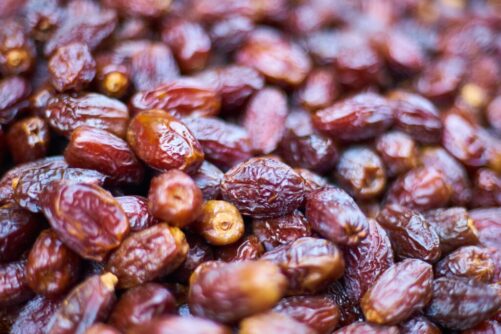
Cons
• One of the highest costs in natural sugar replacements
• Because of its high levels of potassium, those with kidney issues should talk to their doctor before changing to date sugar.
• Dates are not a low calorie sweetener and can lead to weight gain if consumed too much.
• Date sugar has a caramel taste, which may affect the flavor of some recipes.
• Their high fiber content may result in stomach upset if eaten too much.
Sweetness compared to sugar: Dates are considerably sweeter than sugar. The comparison depends on the version being used.
Cooking and baking methods and tips:
• Due to the caramel flavor, date sugar is a 1:1 replacement for brown sugar. With recipes using white sugar, use 2/3 to 1 cup per cup of sugar.
• Some experimentation may be needed to find the best taste. Due to its caramel flavor, it is best suited as a replacement for brown sugar.
• Date sugar does not completely dissolve in liquid, so it may not be best for sweetening drinks or general cooking where that would be an issue
• Date sugar produces a finished product very similar in texture to refined sugar. However, it is known to absorbs liquids, so you may need to add some to your recipes if they come out a bit dry.
• Date sugar browns quicker than refined sugar, so adjustments to time and temperature may need to be used if the end result is too dark.
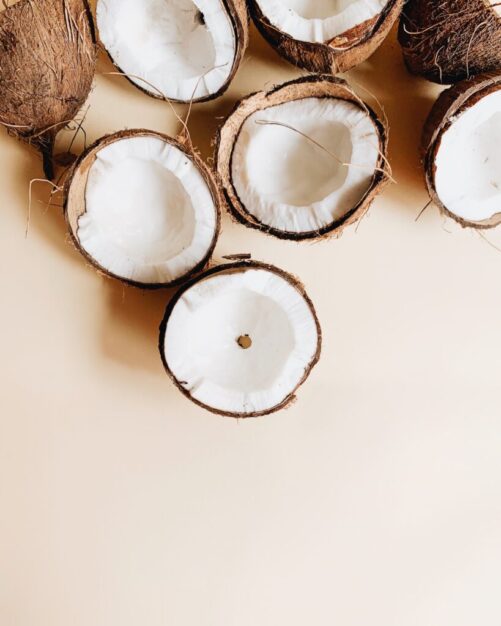
Coconut Sugar
Cost: $.30/oz
Glycemic index: 54
Pros: I have found that coconut sugar produces the best texture, as compared to refined sugar, in baked goods. Coconut sugar is easy on the digestive system, has anti-inflammatory properties, and is usually well tolerated by those on a restricted diet. While not as packed with nutrients as date sugar, coconut sugar does provide several minerals like iron, zinc, calcium, and potassium, as well as fiber, and several B vitamins and antioxidants. It is also relatively low in cost, as compared to other natural sweeteners, even if purchasing organic.
Cons:
• Coconut sugar has a very strong flavor profile that may interfere with certain recipes.
• Coconut sugar is not a zero calorie sweetener and can contribute to weight gain.
• As with any sugar, overindulgence can lead to many of the same risks as refined sugar.
Sweetness compared to sugar: The substitution ratio is 1:1 with refined sugar.
Cooking and baking methods and tips:
• Coconut sugar can easily be substituted for either white or brown sugar. However, the distinct caramel flavor makes it best as a replacement for brown sugar. It does not add the same level of moisture that brown sugar does, so a small amount of additional liquid may be needed, depending on the recipe.
• Coconut sugar pairs beautifully with chocolate. The flavor adds a richness to brownies, chocolate cakes, and cookies.
• As with other dark sugars, it may also require a lower baking temperature to prevent over browning
Sweetness compared to sugar: The substitution ratio is 1:1 with refined sugar.
Cooking and baking methods and tips:
• Coconut sugar can easily be substituted for either white or brown sugar. However, the distinct caramel flavor makes it best as a replacement for brown sugar. It does not add the same level of moisture that brown sugar does, so a small amount of additional liquid may be needed, depending on the recipe.
• Coconut sugar pairs beautifully with chocolate. The flavor adds a richness to brownies, chocolate cakes, and cookies.
• As with other dark sugars, it may also require a lower baking temperature to prevent over browning.
A note on beet sugar: Having grown up in the Northwest, I was raised on sugar derived from sugar beets, as opposed to sugar cane. That changed when I moved south over 40 years ago Over the last 3 years, as I have struggled with a very strong sweet tooth and an equally strong pain response to sugar, a few people have mentioned beet sugar, wondering if it would be an acceptable substitute. In my research for this article, I decided to spend some time investigating this question. Here is what I found:
• Beet sugar is a refined sugar, just like cane sugar, meaning that it is depleted of any nutrients that may have been found in the original plant.
• It has the same number of calories and glycemic index rating.
• Both are sucrose, and produce the same harmful effects on the body.
• 95% of sugar beets are genetically modified, although organic versions of beet sugar are available
But here’s where it gets interesting. While the refining process is very similar, there are some notable differences, primarily in the whitening aspect. Cane sugar is processed using bone char to bleach and filter the sugar. (Bone char is not found in the final product, an important note for vegans) Beet sugar is not processed with bone char, and there may be other steps in the process that are different as well. While that doesn’t make beet sugar a safe product, these differences may reduce the negative effects. I decided to explore this option and purchased a bag of organic beet sugar. On the bag were these words: “Persons with intolerance to refined cane sugar will find beet sugar to be a worthy replacement.” Now, just seeing a sugar company admit to the possibility of “intolerances to sugar” intrigued me, so I made a batch of lemon blueberry muffins with the beet sugar and set myself up as guinea pig. Over the next five days, I ate a large muffin (well, 2 the first day – they were really good!) I typically have an almost immediate response to sugar ( I can tell quickly if I have accidentally eaten sugar when eating out), and then the pain sets in 1-2 days later. I had neither of these effects occur for the entire 5 days, and beyond. I have not yet repeated the experiment, but I am intrigued by the results.
To be clear, I am not advocating adding beet sugar to your normal diet, or even splurging with it frequently. However, if I am able to make a birthday cake or special occasion dessert that the rest of the family will eat and I can safely enjoy as well, then that is a win for me.
While I have not found a “perfect” sweetener that replaces sugar in every recipe, the alternative sweeteners mentioned above are relatively easy to come by, making it easy to have a selection within reach. Let the adventure of new flavors, and maybe some old favorites you thought were gone forever, spur you on as you explore ways to incorporate these sweeteners into your life.
However, keep in mind that our parents were right. “Too much of anything is bad”, and “all things in moderation” are still mottos to live by. Enjoy an occasional treat. Bring some zing back to a recipe you had given up as dull and unfixable. Pull out those favorite recipes you thought were gone forever and experiment, just a bit more. We’ve all been through the grief process, with anger, sadness, and eventually acceptance, as we walked away from the easy and flavorful foods we once enjoyed. I hope that the guidelines above will bring a little bit of “sweetness” back to your life, without pain, without digestive upset, and without guilt. But just a little at a time, on special days, or when you just need a lift, try adding back some of the nutritive-packed, anti-inflammatory sweeteners above. We have a lot of life to live. Make it one to enjoy as well.
Lori Austin is the owner of Good Food Dear Friends, a home based gluten and dairy free baking business dedicated to bringing Food Joy back to those with dietary restrictions. She will be bringing samples, baking mixes, and other items to our Open House on November 19th. There will be several choices using many of the sweeteners discussed in this article.
Ready for Better Health?
You are the most important part of your health journey. We are here for guidance to help you on your journey.


You must be logged in to post a comment.